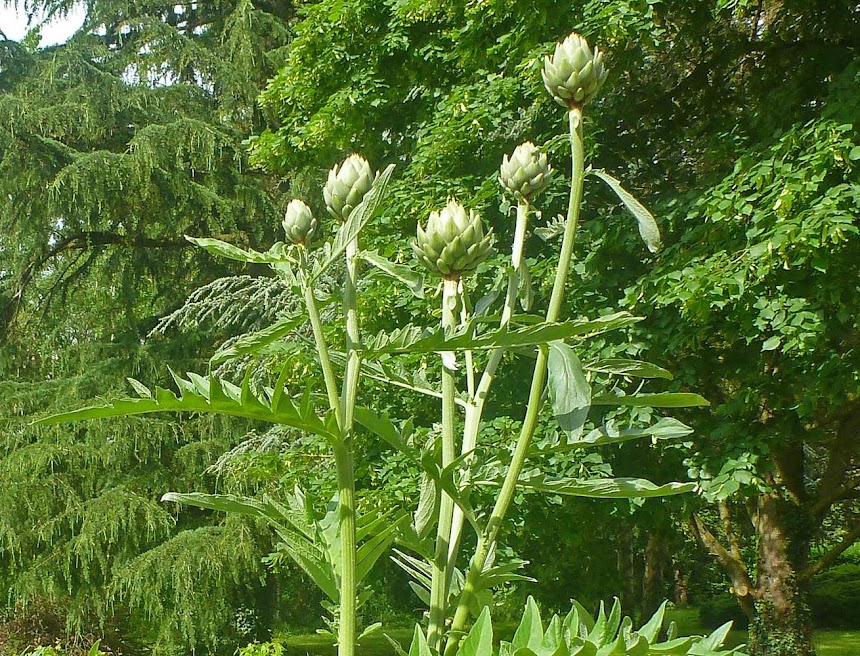You might remember that I bought a couple of kilograms of okra at the Grand Frais market in Vineuil, outside Blois, a few weeks ago. I
blanched them and froze them on trays so that I can easily take out and cook as many as I want, when I want. Yesterday, I wanted.
In my web surfing and reading, I found several recipes for okra and onions cooked with spices including cumin, turmeric, and coriander, along with hot red pepper and lemon juice. I adapted that by adding garlic to the mix and using Chardonnay wine vinegar instead of citrus. The Maille vinegar has an expecially bright taste that I really like. Another white wine or a cider vinegar would also be good in this. Or lime juice, for example.
After the onions and garlic are sautéed in oil and starting to brown, the frozen okra pods go into the pan. Don't thaw them first; let the heat of the pan do it.
Then add the spices and let the okra cook with them for about 10 minutes. At that point add the vinegar (or lime or lemon juice) and either a teaspoon or so of sugar or some sweet wine like hon mirin (a rice wine) or even a sweet French wine like Monbazillac, Muscat, or Vouvray. I always favor sweet wine over sugar in my cooking. Let the okra simmer and steam partially covered for another four or five minutes, or until tender.
Then it's ready. You might notice that I added some little potatoes to the mix, mainly because I had them already cooked and in the fridge. They're nice little yellow-fleshed boiling potatoes grown in the Saint-Malo area of Brittany — French Yukon Golds, you might call them. I got a bag of them at the supermarket.
To go with the okra, Walt grilled a duck breast that I had rubbed with a mixture of spices like the spice blend I used in the okra, but with some smoked paprika and ground cloves added. You score the duck skin with a sharp knife before marinating and then grilling it, letting the spices penetrate into the meat and preventing the breast filet from curling as it cooks.
Here's a recipe for the okra and onions. You can use either fresh or frozen okra for this one, and I think cooking broad flat Roma green beans this way would be really good too.
Spicy pan-roasted okra with onions and garlic
2 Tbsp. vegetable oil
1 medium onion, sliced
3 cloves garlic, sliced
400 g frozen okra pods (just shy of a pound)
½ tsp. ground cumin
2 tsp. ground coriander
¾ tsp. salt
½ tsp. black pepper
½ tsp. ground turmeric
½ tsp. hot red pepper flakes (or more to taste)
1 Tbsp. white wine vinegar or lemon juice
1 or 2 tsp. sweet white wine
Heat oil in skillet over medium heat. Add onion and garlic and sauté for three or four minutes. Add the frozen or fresh okra pods to the pan with the spices. Cook for 10 minutes, stirring to blend all the flavors. Finally, add the vinegar and wine. Loosely cover the pan to steam the okra for a minute or two, and then remove the cover and let the liquid reduce slightly.
Cooked this way, the okra didn't have any of the dreaded "silkiness" (aka "slimy texture") that people often associate with the vegetable. I think the vinegar and wine added at the end dissolve the okra juice. The potatoes turned out to be a good addition, but this okra would be really good served with rice — meatless if you prefer.




















































